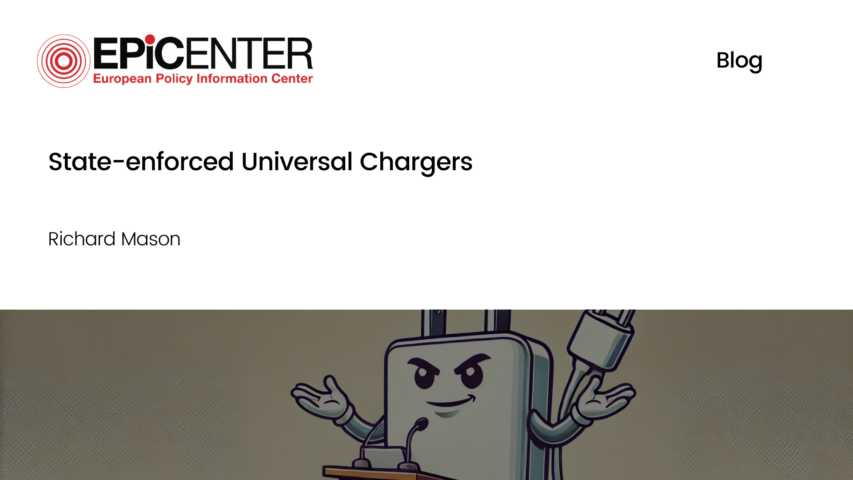State-enforced Universal Chargers

State-enforced Universal Chargers
Richard Mason // 7 August 2018
Picture yourself at a friend’s house. Your Samsung phone buzzes, alerting you to low battery, but you’ve left your charger at home. You ask your friends to borrow one of theirs but, alas, you’re alone in a sea of iPhone users.
It’s a common, frustrating situation to find ourselves in, and we are often left questioning the point of having different types of charger. It’s also an issue that the EU have been trying to tackle for almost a decade.
Concerned by this inconvenience, as well as the amount of electrical and plastic waste caused by discarded chargers, the European Commission has long pushed for harmonisation and the introduction of universal chargers, to no avail.
Faced with an unsuccessful track record, they are now considering alternative routes. As their Commissioner for Competition Margrethe Vestager put it recently: ““Given the unsatisfactory progress with this voluntary approach, the Commission will shortly launch an impact assessment study to evaluate costs and benefits of different other options.”
This likely indicates a move away from the previous role of the Commission as a facilitator of voluntary agreements amongst manufacturers, and towards one of a top-down regulator.
But should we be concerned? After all, a universal charger would be extremely convenient.
Sadly, any immediate benefits arising from an EU-imposed universal charger would come at the expense of long-term innovation. Phone chargers don’t simply differ in the shape and size of the USB cable; they have come to represent an important facet of a smartphones utility, and often factor in greatly when it comes to a consumer’s choice of device.
Indeed, competition between manufacturers has driven the invention of innovative new chargers, including wireless, solar, and fast chargers. It’s how the Google Pixel Smartphone was able to market itself with a tiny 15-minute charge time for 7 hours of battery life, and why other manufacturers are now working to improve their own fast-charging technology. Rather than being a facet of the smartphone market, we might even see a whole new one emerge for chargers alone.
Forcing manufacturers to adopt a single design would remove this element of competition, and with it much of the incentive to keep speeding up charge times. It would also be wholly unnecessary, with many new companies already working towards universally applicable wireless chargers.
Here, further EU regulation will be, at best, redundant in a few years time. At worst, it may actively hinder progress.
EPICENTER publications and contributions from our member think tanks are designed to promote the discussion of economic issues and the role of markets in solving economic and social problems. As with all EPICENTER publications, the views expressed here are those of the author and not EPICENTER or its member think tanks (which have no corporate view).



